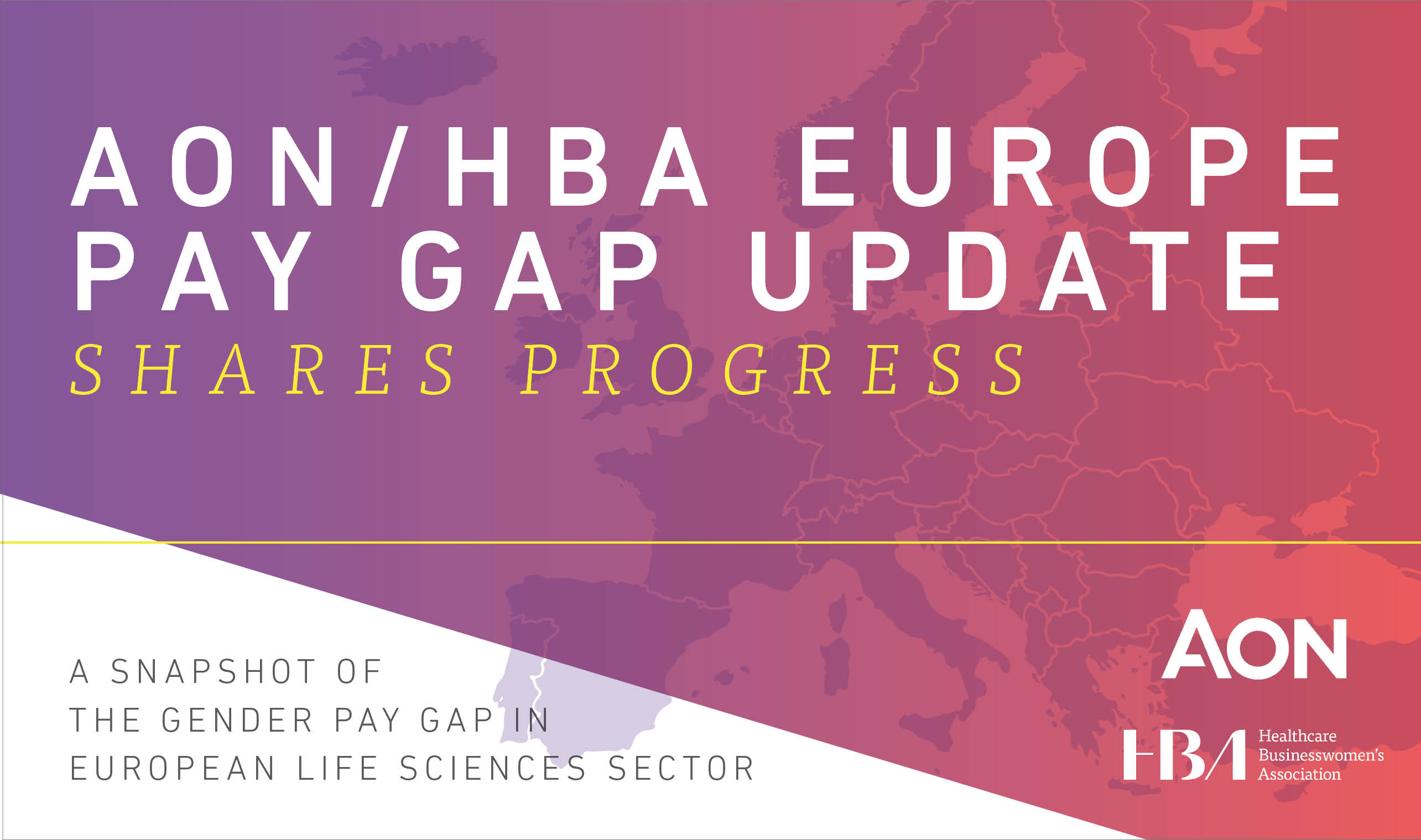2022 Update: A Snapshot of the Gender Pay Gap in Life Sciences-Europe

Gender Pay Gap in Life Sciences
The Healthcare Businesswomen's Association (HBA) and Aon have collaborated to provide a snapshot update on the gender pay gap in the European life sciences sector.
The sector’s gender pay gap narrowed between 2020 and 2021, from 13.1 percent to 12.2 percent across Europe.
Impact of the Pandemic
It is safe to say that the working world was transformed by the impact of the pandemic. Today we regularly use terms such a ‘hybrid working,’ ‘fully remote,’ and ‘collaboration days’ to describe our working models. As we emerge from periods of enforced working from home, the employment market enters a period of extreme volatility. As a result, we see significant increases in employee turnover as many seek new opportunities or are attracted by higher compensation packages with firms looking to find the best talent and economies rebounded (often to referred to as “the Great Resignation”).
This volatility has led to fluctuating compensation levels, and new hire increases are often set at rates previously unseen. This will undoubtedly impact the gender pay gap, whereby the steps to actively close the gap may be displaced by a priority to attract and retain talent, initially through compensation, and managing a remote workforce. If a high proportion of senior levels of employees were to leave and be replaced without due consideration to diversity and inclusion goals, then this will serve to widen and instead of closing the gap.
The Current Gender Pay Gap
Against this backdrop, it remains important to take the pulse of the market and observe where the gender pay gap is today. We have created a snapshot of the current base salary gender pay gap referencing pay reviews, conducted in 2021, in life sciences companies across Europe.
Encouragingly, despite recent volatility, there is a positive outcome, and it shows that across Europe, the base salary pay gap has closed slightly. In 2020, the median base salary pay gap for Europe was 13.1 percent, which has narrowed to 12.2 percent in 2021.
We do observe, however, more volatility on an individual country-by-country basis, as the chart below indicates an increase in the base salary gap between 2020 and 2021 across the focus markets in France, Germany, Switzerland, and the U.K.
The swing in year-on-year data illustrates the need to keep monitoring the gender pay gap.
Developments in Gender Pay Reporting and Transparency
In April 2022, the European Union Parliament endorsed the main provisions of the proposed EU Directive on Equal Pay and Pay Transparency. This will lead to further gender pay gap regulations and aims to proactively accelerate closing the median pay gap, which across all industry sectors in Europe sits at 13 percent reducing by one percentage point in comparison to 2020 but stands one percentage point higher than a similar analysis in 2018. Only time will tell whether this EU Directive will increase this pace.
Where Next?
Gender pay gap reporting has started firms on the journey to addressing pay inequity in the workplace, particularly in the cases of a bias towards men in senior positions in organisations. This has shone a light on the topic and organisations have begun looking at this issue in more detail to better understand the factors that contribute to differences in gender pay and pay equity. While regulations vary across markets, a reported pay gap analysis usually provides an unadjusted pay gap (i.e., the difference between salaries without accounting for job related factors).
For firms who strive to understand drivers of pay more deeply, a pay equity analysis compares pay for similar work – that is, it accounts for legitimate factors that are intended to drive differences in pay such as experience, location, and role, before calculating an all else equal ‘adjusted’ pay gap between women and men or racial/ethnicity groups. Aon’s experience in other markets where gender pay gap reporting has been commonplace for many years confirms that firms need more insight to act, to identify the real pay equity situations and take steps to address these. In achieving fairer pay outcomes, organizations will be well-positioned to build employee loyalty, cultural integrity, and positive workforce outcomes.
Looking Forward
Later this year, the HBA, in partnership with Aon, will be conducting a detailed analysis of the 2022 gender pay across the European life sciences sector. This will incorporate both an update of the gender pay gap and firms will be invited to participate in bespoke gender pay equity studies to identify how to address specific pay equity situations and their root causes.
Following the publication of this analysis in November, the HBA will be running a series of events to discuss the gender pay gap results. If your organisation would like to participate or sponsor these events, please contact Ingrid Marchal-Gerez.
About Aon
Aon plc (NYSE:AON) is a leading global professional services firm providing a broad range of risk, retirement, and health solutions. Our 50,000 colleagues in 120 countries empower results for clients by using proprietary data and analytics to deliver insights that reduce volatility and improve performance. www.aon.com
About the Healthcare Businesswomen’s Association (HBA)
The Healthcare Businesswomen’s Association is a global nonprofit organization comprised of individuals and organizations in healthcare committed to:
- achieving gender parity in leadership positions
- providing equitable practices that enable organizations to realize the full potential of women
- facilitating career and business connections to accelerate advancement
The HBA accomplishes its mission through strong business networks, education, research, advocacy, and recognition of individuals and companies.